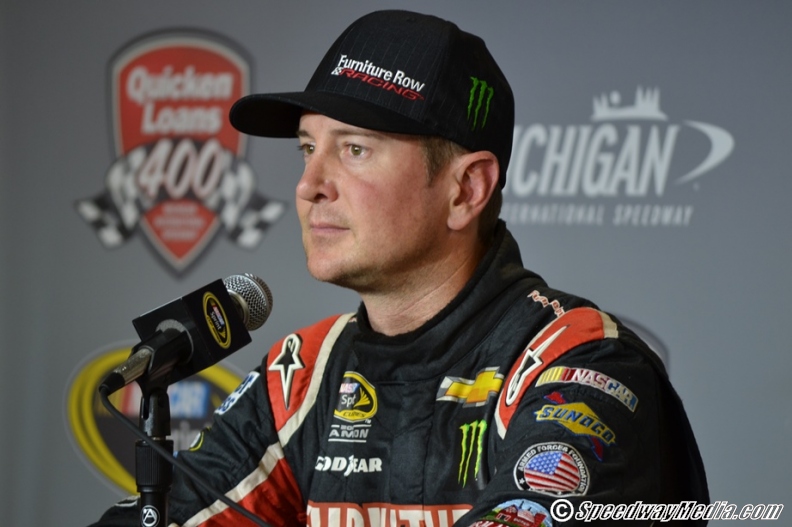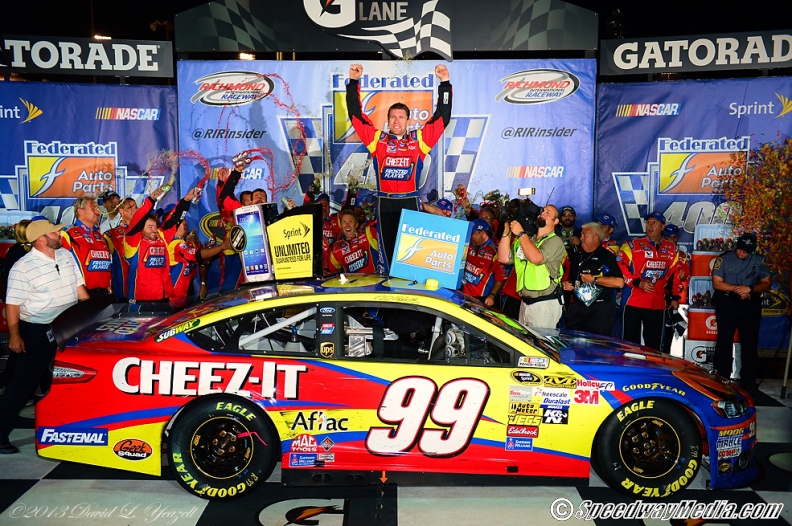Just three years ago, the Chase looked a lot different than what we’re faced with in 2013. Back in 2010, the Chase field was made up of Denny Hamlin, Matt Kenseth, Carl Edwards, Greg Biffle, Kyle Busch, Tony Stewart, Kurt Busch, Jeff Gordon, Kevin Harvick, Jeff Burton, Jimmie Johnson, and Clint Bowyer. Today, Hamlin, Stewart, Gordon, and Burton didn’t make the cut. Replacing them is Martin Truex, Jr., Dale Earnhardt, Jr., and Joey Logano.
It is almost a changing of the guard. Sure, Hamlin is young and will be back as will Stewart hopefully, but Gordon? For the second straight year, it came down to the last race for the four time champion. Is his run over? I wouldn’t count him out, given the resources of Hendrick Motorsports, but it may be time to say that his star is dwindling a bit. It happens to everyone and every team.
Hidden in all of this is the madness of how the final ten races are seeded. In 2013, the point leaders went into the Chase based on the standings after Richmond. It wasn’t enough that the Chase was born after Matt Kenseth’s championship in 2003 when Kenseth only had one win, the seating was tweaked to include a bonus point system that took into consideration the number of wins a driver had. The theory was that wins should be considered. The bonus points goes against anything in sports. It’s like giving the Cincinnati Reds or Los Angeles Dodgers bonus points for winning the most games. It’s unheard of in the annals of sports. Thus, Carl Edwards who won the regular season points race is going to be fifth in the final seeding going into the final standings going into the Chase. Matt Kenseth will be seeded first and Jimmie Johnson second because of their wins. Kasey Kahne, Joey Logano, and Martin Truex, Jr. got in because of wins, and Jeff Gordon and reigning champion Brad Keselowski were lift out because they didn’t win. How would the 2013 Chase look different because of that rule?
The wins rule only continues to give the advantage to the super teams (Hendrick, Richard Childress Racing, Roush-Fenway, Penske, and Joe Gibbs Racing). In the old system, it was consistency that counted, and wins were rewarded because a race was won. These days, qualifying for the championship run has more to do with the regular season 26 races and more to do with the ability to win races. It’s a noble attempt, but a lot of good teams get left out. My theory has always been that only a few really good teams will have a chance anyway, but this lets teams who really didn’t have a good season, but had a couple of wins the advantage. Only drivers of the previously mentioned super teams have a chance. Regardless, the field (including two cars from Roush-Fenway, three from Hendrick, one from Penske, two from Michael Waltrip Racing, three from Joe Gibbs Racing, and one from Furniture Row—nine from the super teams). The consistency from the first 26 races gives us a clue on who will be the 2013 champion. Just like always.
Of course there is always a chance that a miracle can happen, just like 2011 when Tony Stewart stormed back to win when all odds were against him. I don’t really see that happening this year. If a team is not in the top six, it’s likely that they will fall to the wayside. With all the changing and tweaking of the “playoff,” will it really make any difference? Money talks and we will see that in the 2013 Chase.









